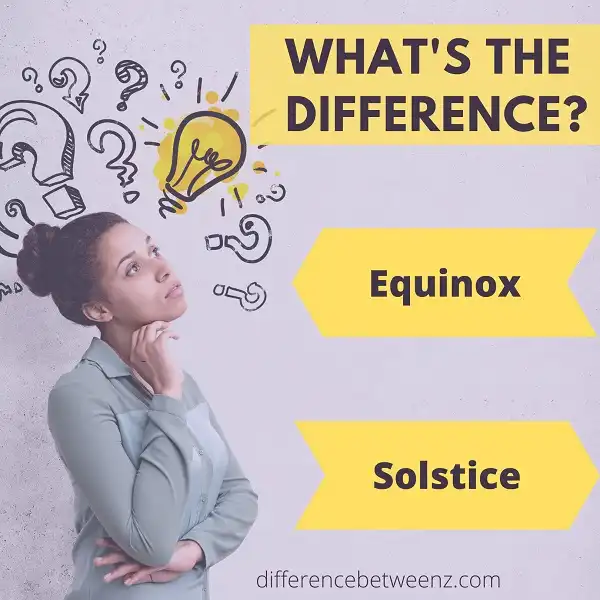Equinoxes and solstices are astronomical events that happen twice a year. They are caused by the Earth’s tilt on its axis. The vernal equinox happens on or about March 20th each year and falls equinox on or about September 22nd. The winter solstice is December 21st while the summer solstice is June 20th.
What most people don’t know, is there is a big difference between an equinox and a solstice. An equinox marks the day when the sun crosses the celestial equator, while a solstice marks the day when the sun reaches its highest point in the sky at noon (highest altitude). There is also a difference in how long they last. Equinoxes last for only seconds, while solstices can last for up to two weeks.
What is Equinox?
An equinox is an annual event that occurs twice a year when the sun is directly overhead at the Equator and the lengths of day and night are nearly equal. The word “equinox” comes from the Latin words for “equal night.” For this reason, it is also sometimes referred to as the “day of equals.” The September Equinox marks the start of astronomical autumn in the Northern Hemisphere, while the March Equinox heralds the start of spring. At the Equinox, the sun rises due east and sets due west. The Equinox occurs because Earth’s axis is tilted at an angle of 23.5 degrees from perpendicular to its orbital plane. As a result, over the course of a year, the Northern and Southern Hemispheres alternately experience more direct sunlight as Earth orbits around the sun. The Equinoxes are a time of balance and new beginnings when day and night are in perfect harmony. For many cultures, they have been a time to celebrate nature’s bounty and give thanks for the gifts of the Earth.
What is Solstice?
A solstice is an astronomical event that occurs when the sun is at its Greatest northern or southern excursion relative to the celestial equator on the celestial sphere. In other words, it is when the sun is at its highest or lowest point in the sky. There are two solstices each year, the summer solstice and the winter solstice. The summer solstice occurs when the sun is at its northernmost point, and the winter solstice occurs when the sun is at its southernmost point. Solstices are opposite on either side of the equator, so the winter solstice occurs in December in the Northern Hemisphere and in June in the Southern Hemisphere. The word “solstice” comes from the Latin word for “sun standing still.” The word “solstitial” comes from the Latin words for “summer” and “sun.” Solstices are special because they mark the longest and shortest days of the year. They are also considered to be powerful times for magical and religious rituals.
Difference between Equinox and Solstice
Equinox and solstice are two important terms related to the Earth’s axial tilt and orbit around the sun. The equinox occurs when the sun is directly above the Equator, and day and night are of equal length. This happens twice a year, once in spring and once in autumn. The solstice occurs when the sun is at its highest or lowest point in the sky. This happens once a year in June (summer solstice) and December (winter solstice). The word ‘solstice’ comes from the Latin ‘solstitium’, which means ‘sun stands still. The equinox and solstice are related to the changing seasons. Spring Equinox marks the start of spring, while Summer Solstice marks the start of summer. Autumn Equinox marks the start of autumn, while Winter Solstice marks the start of winter. Hope this explained it well! 🙂
Conclusion
Although the two astronomical events fall on the same day, they have different meanings for cultures around the world. The autumnal equinox is a time to celebrate new beginnings, while the winter solstice marks the longest night of the year and a time of renewal. Understanding these differences can help you better connect with your customers and create content that resonates with them.


